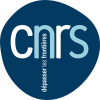Vous êtes ici : Accueil › Spectral nudging in regional climate modelling: how strongly should we nudge?
Spectral nudging in regional climate modelling: how strongly should we nudge?
Abstract
Spectral nudging is a technique consisting in driving regional climate models (RCMs) on selected spatial scales corresponding to those produced by the driving global circulation model (GCM). This technique prevents large and unrealistic departures between the GCM driving fields and the RCM fields at the GCM spatial scales. Theoretically, the relaxation of the RCM towards the GCM should be infinitely strong provided thre are perfect large-scale fields. In practice, the nudging time is chosen based on trial and error. In this study, the physical parameters setting the optimal nudging coefficient are identified and their effects are discussed. In addition to the predictability time τp, already analyzed in a companion article, the time interval τa between consecutive GCM driving fields is a key controlling parameter, especially when spectral nudging is considered. Indeed, the driving GCM fields are interpolated in time at every RCM integration time step, which is much smaller than τa. This produces an inaccurate evolution of the GCM fields. A nudging time close to zero (infinitly strong nudging) would thus produce a non-realistic evolution of the RCM large-scale field and consequently an inaccurate small-scale field. The optimum nudging coefficient thus differs from zero, but remains smaller than the predictability time τp, as discussed elsewhere. Furthermore depending on the time interval τa, all scales present in the driving fields may not be well time-resolved. It can then be beneficial to filter them out rather than driving the RCM with fields affected by time-sampling errors. Copyright © 2012 Royal Meteorological Society
Omrani, H., Drobinski, P., & Dubos, T. (2012). Spectral nudging in regional climate modelling: how strongly should we nudge?. Quarterly Journal of the Royal Meteorological Society, 138(668), 1808-1813.







